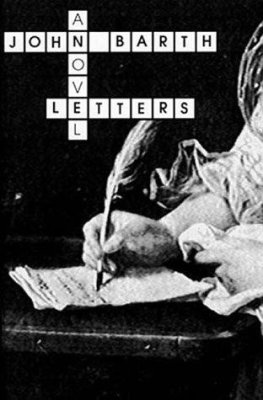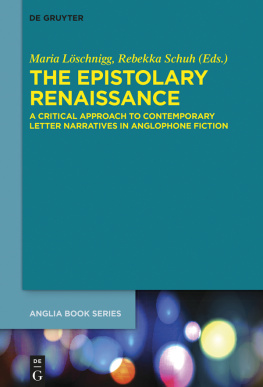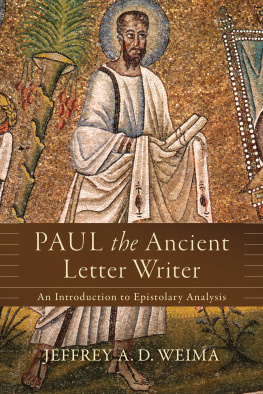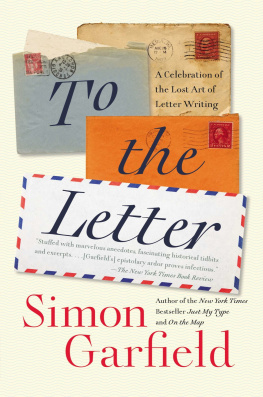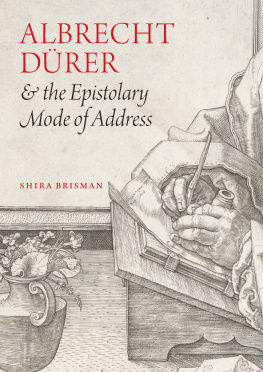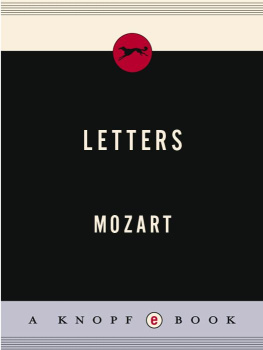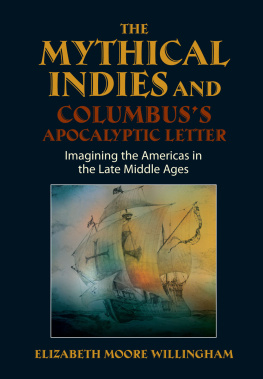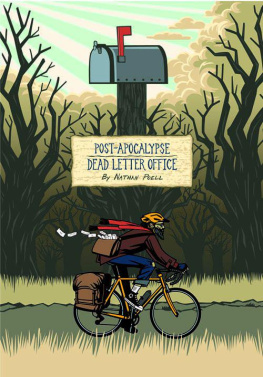Conclusion
New Republics of Letters
From the 1580s through to the early years of the Restoration, the printed familiar letter was put to a range of purposes. The different epistolary modes covered in the preceding chaptersletter-writing manuals, love letters, letters of friendship, letters exposing political secrets, single-author friendship letters and philosophical lettersare social rather than singular individual forms. This community-centred point of view does not erase individual speech: it remains distinct from, yet situated within, dialogue with others. The familiar letter is a hybrid discourse founded through private intimate exchange, made public through print. Discursive forms encode socio-political relations. As Michael Warner observes: This means not only that participation in a medium constitutes membership in a community [...] but also that the positive features of the medium implicitly differentiate the assumed collectivity. The flexibility by which Erasmus defines familiar epistolary discourse accounts for the canonical status it gained in post-Restoration writing.
Post-Restoration printed familiar epistolary discourse is a highly varied field. It ranges from examples continuous with the sixteenth- and seventeenth-century tradition of familiar epistolarity derived from humanist rhetoric, to others that adapt the form to the interests of new groups of readers. Letter-writing manuals continued to flood the market throughout the eighteenth century (and beyond), spawning a number of new forms.1715 and 1716 was published in 1717 in an edition prepared by Clarke. In spite of the activity of female letter-writers in print and manuscript, the republic of letters was predominantly theorised as a masculine sphere. In female-authored printed familiar letters, however, the gendering of the public sphere and its corollaries of nation, fraternity, and religion were challenged.
In a letter to Alexander Pope dated 12 February 1717, included in The Turkish Embassy Letters (1763), Lady Mary Wortley Montagu describes her visit to the battle field at Karlowitz where the Austrian Prince Eugene had defeated the Turks in 1699. She writes that The marks of that glorious bloody day are yet recent, the field being strewed with the skulls and carcasses of unburied men, horses and camels. She reflects that if a contest over a small spot of ground justifies the horror [of] such numbers of mangled human bodies, and the injustice of war that makes murder not only necessary but meritorious then Nothing seems [...] a plainer proof of the irrationality of mankind, whatever fine claims we pretend to reason. She extrapolates that she is a good deal inclined to believe Mr Hobbes that the state of nature is a state of war.
In The Turkish Embassy Letters, Montagu challenges the distinctions naturalised by epistolary form and the communities it has been deployed to describe. She writes as an Englishwoman abroad who retreats from English they do not envisage a purely feminine community. Her letters to men, such as Pope or the Abb Conti, demonstrate that reasoned exchange can occur across gendered lines.
Familiar epistolary dialogue entails equality but not necessarily sameness. This attitude applies to the difference between men and women on the one hand, Sidestepping the question Why a Gods name, may not we, as else the Greeks, have the kingdom of our own language? posed by Spenser, she invokes a community which is not bound by nation, empire, sex, religion or even its own language.
Montagus familiar letters imagine a community delimited by reason. Although Turkish Embassy Letters implies a public sphere broadened to include the Turks, it does not fully embrace the radical levelling implications of familiar epistolary dialogue. This is also true of the sixteenth- and seventeenth-century familiar letters covered in this study. For example, Spenser and Harveys kingdom of [their] own language and Days group of any learner[s] implicitly exclude women, and The Secretary of Ladies excludes those who do not recognise the truth of Franois de Sales teachings. As the genre of friendship, familiar epistolary dialogue is an inherently sociable discourse, ideally suited to imagining forms of community bound only by the participants linguistic know-how or capacity to reason. In practice, however, letter-writers delimit the republic of letters, expending as much energy portraying those who should be included as those unreasonable creatures who should not. Sustained by familiar epistolary discourse, each republic of letters imagined holds unfamiliar others at bay.
Michael Warner, The Letters of the Republic: Publication and the Public Sphere in Eighteenth-Century America (Cambridge: Harvard UP, 1990) 12.
Jrgen Habermas, The Structural Transformation of the Public Sphere: An Inquiry into a Category of Bourgeois Society, trans. Thomas Berger with Frederick Lawrence (Cambridge: MIT Press, 1991) 523.
Habermas 51.
On the long manual tradition see Eve Tavor Bannet, Empire of Letters: Letter Manuals and Transatlantic Correspondence, 16801820 (OUP, 2005).
Mary A. Favret, Romantic Correspondence: Women, Politics and the Fiction of Letters (CUP, 1993) 9.
William C. Dowling, The Epistolary Moment: The Poetics of the Eighteenth-Century Verse Epistle (Princeton UP, 1991).
On George Foxs Barbados letters see Moira Ferguson, Seventeenth-Century Quaker Women: Displacement, Colonialism, and Anti-Slavery Discourse, Culture and Society in the Stuart Restoration: Literature, Drama, History, ed. Gerald MacLean (CUP, 1995) 2225.
On Hannah Wolleys manuals see Elaine Hobby, A Womans Best Setting Out is Silence: The Writings of Hannah Wolley, Culture and Society in the Stuart Restoration 179200.
On the Epicureanism in eighteenth-century verse epistles to friends see Dowling 448.
Mary Wortley Montagu, 24, To Alexander Pope, Belgrade 12 February 1717, The Turkish Embassy Letters, ed. Malcolm Jack (London: Virago, 1994) 51. On Montagus epistolary style see: W.H. Irving, The Providence of Wit in the English Letter Writers (Durham: Duke UP, 1955) 20515; Robert Halsband, Lady Mary Wortley Montagu as Letter Writer, PMLA 80.3 (June 1965): 15563; Cynthia Lowenthal, Lady Mary Wortley Montagu and the Eighteenth-Century Familiar Letter (Athens: U of Georgia P, 1994), 2934; and James How, Epistolary Spaces: English Letter Writing from the Foundation of the Post Office to Richardsons Clarissa (Aldershot: Ashgate, 2003) 78107. On her correspondence with Pope, see Cynthia Wall, Editing Desire: Popes Correspondence with (and without) Lady Mary, Philological Quarterly 71 (1992): 22137.
Montagu, 21, To Lady Mar, Vienna, 16 January 1717, Turkish Embassy Letters 423.
For Montagus satire of Viennese feminine etiquette see, 11, Yo Mrs T, Vienna, 26 September 1716, Turkish Embassy Letters 245; on the morality of Turkish ladies see 20, To Lady Mar (Adrianople, 1 April 1717) Turkish Embassy Letters 71.
On Montagus feminist outlook on Turkish custom see Meyda Yegenoglu, Supplementing the Orientalist Lack: European Ladies in the Harem, Inscriptions 6 (1992): 4580; Sandra Sherman, Instructing the Empire of Beauty: Lady Mary Wortley Montagu and the Politics of Female Rationality, South Atlantic Review 60.4 (November 1995): 126; Anna Secor, Orientalism, Gender and Class in Mary Wortley Montagus Turkish Embassy Letters: To Persons of Distinction, Men of Letters &c., Cultural Geographies 6.4 (1999): 37598; and Teresa Heffernan, Feminism Against the East/West Divide: Lady Marys Turkish Embassy Letters, Eighteenth-Century Studies 33.2 (2000): 20115.
Edmund Spenser & Gabriel Harvey,


